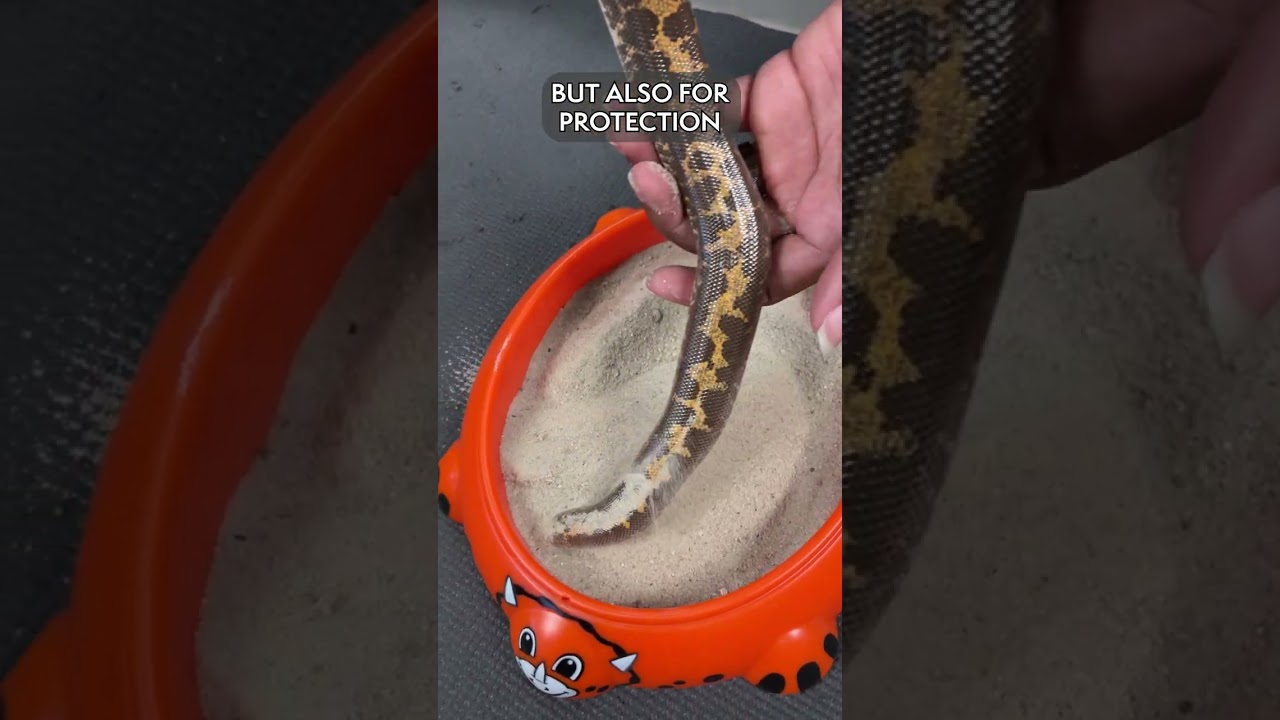Summary:
1. Introduction to the Kenyan Sand Boa and its unique digging abilities.
2. Anatomy and physical adaptations that enable the Kenyan Sand Boa to dig.
3. The sand boa’s behavior and habitat preferences.
4. Reproduction and parenting in the Kenyan Sand Boa.
5. Conservation status and importance of protecting this fascinating reptile.
Meet the Kenyan Sand Boa: A Legless Reptilian Digging Specialist!
Imagine a creature that spends most of its life buried beneath the sand, using its body and specialized scales to easily dig through the soft grains. You might assume this description belongs to a burrowing mammal or perhaps an insect, but prepare to be amazed as we introduce you to the unique and fascinating Kenyan Sand Boa, a reptilian digging specialist like no other. Despite lacking limbs or claws, these African wonders have evolved extraordinary abilities to navigate and thrive in their sandy environment.
Anatomy and Physical Adaptations:
At first glance, the Kenyan Sand Boa may appear unremarkable. But upon closer inspection, you’ll discover a host of incredible adaptations that enable this snake to become an expert digger. This small boa typically measures between 15 and 20 inches long, with females larger than males. Its torpedo-shaped body and shovel-like head provide the perfect tools for burrowing through the loose sand. To further aid in this task, the snake possesses specialized scales on its belly, allowing for increased traction and efficient movement below the surface.
Behavior and Habitat Preferences:
The Kenyan Sand Boa’s name originates from its natural habitat, the sandy regions of East Africa, particularly Kenya. These snakes have a strong affinity for sandy environments and are primarily found in deserts, grasslands, and sandy savannahs. They are primarily nocturnal creatures, relying on the cooler nighttime temperatures to venture out of their caves and hunt for prey. This secretive behavior makes encounters with these elusive snakes quite rare. Still, their presence is undeniable due to their intricate tunnel systems and shed skin remnants occasionally found in the sand.
Reproduction and Parenting:
One intriguing aspect of the Kenyan Sand Boa’s life is their unique approach to reproduction. Like many other snakes, these boas reproduce by laying eggs. However, they exhibit a remarkable reproductive technique called “maternal incubation.” After mating, the female Kenyan Sand Boa will retain the developing eggs within her body, providing warmth and protection until they hatch. This method ensures optimal conditions for the unhatched offspring and showcases the incredible maternal instincts of these reptiles.
Conservation Status and Importance:
While the Kenyan Sand Boa may not be classified under any specific conservation category, it is crucial to acknowledge the importance of protecting this fascinating reptile and its fragile habitat. Like many species, the Kenyan Sand Boa faces numerous threats, including habitat degradation, habitat loss due to human activities, and illegal pet trade. Conservation efforts in the regions where they are found are essential to maintaining healthy populations and preserving the delicate balance of African ecosystems.
In conclusion, the Kenyan Sand Boa is a testament to nature’s remarkable abilities and countless wonders. This legless reptile has conquered a unique niche, utilizing its torpedo-shaped body, specialized scales, and innate digging instincts to thrive in sandy environments. Its ability to burrow with finesse, reproduce through maternal incubation, and adapt to its surroundings showcases these reptiles’ incredible versatility and resilience. As we continue to explore the diverse world of nature, let us appreciate and protect these fascinating creatures, ensuring their place in the tapestry of African wildlife remains intact for generations to come.
*****
Source Description
Snakes don’t have limbs or claws, but that doesn’t mean they cannot dig. As evidence, we present the Kenyan Sand Boa. This little African wonder uses a torpedo-shaped body and head and some specialized scales to submerge itself in the sand, where it spends 80% of its life!
#animals #snakes #reptiles #biology #nature #boas #sandboas #africanwildlife #africa #didyouknow #dyk #til #weird


